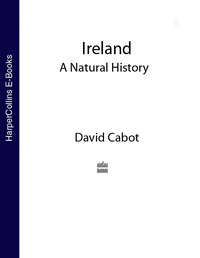
Полная версия
Collins New Naturalist Library
Ussher, born and based in Co. Waterford, was, according to Praeger, facile princeps among Irish ornithologists. He was a quiet, courteous man with blue eyes and a red bushy beard. His almost over-modest bearing conveyed little impression of the determination, fearlessness, and contempt for discomfort he harboured inside. His expeditions, whether ornithological or speleological, necessitated descending the most dangerous cliffs and working underground for weeks amid rocks and mud. There were indeed very few cliffs, hills, loughs, woods and other places in Ireland that did not receive the imprint of Ussher’s foot. He was an oologist and for many years relentlessly persecuted the eyries of his favourite species, the peregrine falcon. He gave up egg collecting later in life. Warren was less robust. Born in Cork, he later settled on the Moy Estuary, Co. Mayo, an excellent location for birds. A regular correspondent with Thompson, he supplied the latter with plenty of information to be used in the Natural History of Ireland.
The Birds of Ireland proved worthy of its predecessor of 50 years earlier. It is probably the finest avifauna of its time from any European country with accurate and detailed information on the status and distribution of all species recorded in Ireland. Much of the data was gathered in the field by Ussher, to which were added Barrington’s results from the migration studies, and Warren’s steady contributions. Like Thompson, Ussher also drew upon an extensive network of gifted bird watchers scattered throughout the country who provided, by correspondence, detail of local occurrences. The quality of the information in The Birds of Ireland, as in Thompson’s three volumes on birds, is irreproachable, making it an invaluable historical text, regularly quoted by ornithologists today.
The Victorian natural history clubs
One particularly important development of the Victorian period was the field club which has been described by Allen as a masterpiece of social mechanism.62 These clubs were founded in most large British towns and cities during the 1820s and 1830s. The meeting rooms were the focus of intellectual debates on natural history with much exchanging and sharing of views. Special displays, or ‘cabinets of curiosity’, which were essentially miniature museums, flourished in association with these clubs. Field excursions were all the rage. The day was spent, often after a group breakfast – improved by a few stiffening drinks for the more hardy members – collecting specimens of flowers and rocks and perhaps some insects. Women were very much present on the outings as shown by group photographs. A grand picnic punctuated midday, adding further to the fortification of the participants, followed by more hunting of ‘specimens’ before the group dispersed to change gear and boots – the excursionists wore what would be seen today as the most inappropriate attire for active field work. They later reassembled for dinner and afterwards continued to be enlightened on the subject of natural history by ‘addresses’ and speeches from the luminaries. Most clubs were patronised by a single social class, the privileged one. But a few were more open and democratic.
The Belfast Natural History Society came into existence in 1821 – one of the first societies within Ireland and Britain. It was formed for the ‘cultivation of Zoology, Botany and Mineralogy in all their branches, more especially the investigation of the Natural History and Antiquities of Ireland’. The word ‘Philosophical’ was added in 1842 to the Society’s name which then became The Belfast Natural History and Philosophical Society to allow scope for a broader interaction between science and ideas. Robert Templeton and William Thompson, two of Ireland’s most distinguished naturalists, were members of the BNHPS. So was Robert Patterson, author of several zoological text books and, following the death of his friend Thompson, editor of the fourth volume of The Natural History of Ireland. In the words of John Wilson Foster, the Society was an ‘impressive intellectual consortium’ that bridged the arts and science.92
Partly as a result of a series of very successful public lectures on geology by Joseph Beete Jukes (1811–69) and on natural history by Ralph Tate (1840–1901), organised by the Department of Science and Art in Belfast in 1862–3, demand arose for a specialist natural history society. This led to the creation of the Belfast Naturalists’ Field Club (BNFC) in 1863, a society much more narrowly focused on natural history than its predecessor, the BNHPS. However, both these organisations shared many common members, up to 500, most of whom were of the Protestant middle classes from the ship-owning and linen-manufacturing families of Belfast – a good number of them were women. Further south, in the less industrial parts of the country, the development of societies and clubs was slower: the Natural History Society of Dublin started in 1838 and ended c.1871; the Cuvierian Society of Cork fl. 1845–55; the Dublin Microscopical Club in 1849–1924; the Dublin Naturalists’ Field Club in 1885–present day; the Cork Naturalists’ Field Club 1892–1923, and the Limerick Naturalists’ Field Club 1892–1912.
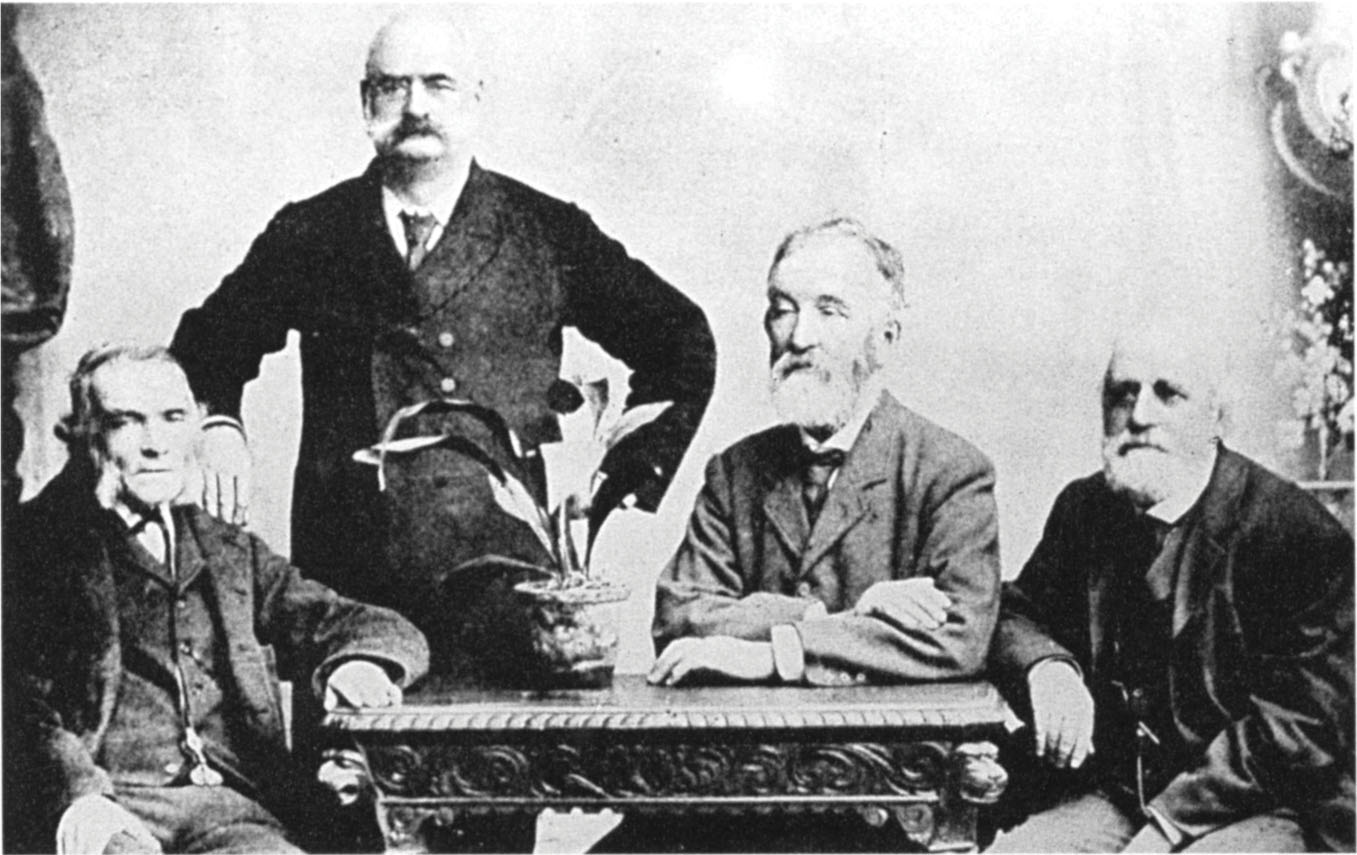
Eminent Victorian naturalists Samuel Alexander Stewart, Ralph Tate, William Gray and Joseph Wright at a meeting of the Belfast Naturalists’ Field Club in the early 1860s.
The Dublin Naturalists’ Field Club was founded by Alfred Cort Haddon (1855–1940), who started his scientific career as a marine zoologist engaged in deep water dredging expeditions off the southwest coast in 1885 and 1886. But, on taking up a Fellowship at Cambridge in 1901, it was his interest in anthropology that consumed the remainder of his professional life. Towards the end of his stay in Ireland he published several papers on the cranial measurements of west coast islanders where he was affectionately known as ‘Haddon the head hunter’. In the words of Praeger, ‘after a brief period of decline following a very successful start, the Club settled down, and with some fluctuations has reached a gratifying success’.2 Initially the Club apparently felt no need to establish its own journal as there already existed other publication outlets that could be used. But the Club’s great achievement was the founding, in 1892, of the Irish Naturalist, an independent monthly journal for all aspects of Irish natural history. For 33 years the Irish Naturalist was the main outlet for Irish natural history publications. As rightly pointed out by Patrick and Peter Wyse-Jackson in their review of the journal ‘it is one of the major sources for scientific research today and provides a valuable insight into the countryside, nature, environment and attitudes of the 1890s to 1920s’.93 The last issue was December 1924. Its demise was due mainly to financial mismanagement and other circumstances of the early 1920s, exacerbated by the wider economic and political uncertainties facing the country. Almost immediately after its death another publication, The Irish Naturalists’ Journal, sprung forth from Belfast in September 1925. The new Journal was born, at the insistence of the Belfast Naturalists’ Field Club, under the aegis of a committee, representing various natural history societies and institutions from both parts of Ireland. Today, after 73 vigorous years, The Irish Naturalists’ Journal is the main organ for Irish naturalists to reveal their discoveries and findings.
Another institution pivotal to the development of Irish natural history was the Dublin Natural History Museum. In 1792 the Royal Dublin Society (founded in 1731 for improving ‘Husbandry, Manufactures and other useful Arts and Sciences’) bought ‘the natural history museum’ of the German Nathaniel Gottfried Lesk (1752–86), known as the Leskean collection, of minerals, shells and insects – at least 2,500 species of the latter. Later, in June 1795, William Higgins was appointed Professor of Chemistry and Mineralogy and put in charge of the special cabinet, designed to host this collection, placed in a spacious apartment in Hawkins Street and open to students. Thus the Dublin Natural History Museum was born. Now located in its own building in Merrion Street, it attracts over a quarter of million visitors each year. The Museum has one of the world’s finest and fullest collections in the old cabinet style, reminiscent of former times. To enter it is to set foot in another world, so much so that it could be described as ‘the museum of a museum’. Over the years many distinguished Irish naturalists and zoologists have served in the institution, making significant contributions to Irish natural history.
Back in Northern Ireland the BNFC served as a valuable nursery for young naturalists who were given their first organised encounters with nature and had opportunities for brushing their minds against their more learned and experienced elders. Praeger’s father enrolled the young Robert aged 11 as a member. Praeger recounts that he formed many friendships with the older members who ‘one by one crept silently into the grave’. Praeger acquired, along with many others, a knowledge of field-lore – botanical, zoological and geological – which stood him in good stead throughout his life. To Praeger the Field Club was a ‘second university in which I formed friendships which, despite disparity of age, remained warm and intimate’. Some Field Club excursions into the countryside aroused wry comments from locals. On one such occasion Praeger was leader of the group and overheard two locals: ‘Where d’you think they’ve come from?’ asked one. ‘O’ch, they’re from the asylum’, came the answer from the other, and pointing his finger at Praeger ‘That one there is the keeper.’
Natural history in the twentieth century
Robert Lloyd Praeger (1865–1953) was one of the indomitable class of naturalists who were robust in physique and driven by continuous energy. Together with John Templeton and William Thompson, Praeger was probably the most significant naturalist to have come out of the Province of Ulster. Praeger was born near Belfast. His father was from the Hague, Holland, and his mother was Maria, daughter of Robert Patterson F.R.S. (1863–1931), of three generations of Belfast naturalists and from whom Praeger claims to have inherited ‘a taste for natural science’.94 His masterpiece was Irish Topographical Botany, published in 1901 as Volume VII of the Proceedings of the Royal Irish Academy.71 A peak in Irish botanical research, it represents five years of intensive field work and the collation of thousands of records arranged systematically with notes on their distribution throughout the 40 botanical divisions of Ireland. The book was effectively the equivalent of 40 ‘county’ floras! Praeger updated it by publishing a series of three special supplements that included new discoveries for the periods 1900–1905, 1906–28 and 1929–34, also in the Proceedings of the Royal Irish Academy.95,96,97 A monument of knowledge, Irish Topographical Botany provides a feast of information for the specialist, but it is not a book that accommodates the general reader. Praeger corrected this with A Tourist’s Flora of the West of Ireland (1909)98 covering 11 of the western botanical ‘Divisions’ and later by The Botanist in Ireland (1934)99 which embraced the whole country. The charm of these two popular books rests on Praeger’s succinct and concise style when dealing with the topographical, geological and botanical features of the best-known sites. In his preface to The Botanist in Ireland he writes: ‘All that I have to say at the conclusion of fifty years’ field-work in Ireland, during which I have explored the flora of every country, of every important mountain-range, lake, river and island, is embodied in condensed form in the present work.’ Neither A Tourist’s Flora nor The Botanist in Ireland are obsolete today. They contain fine photographs of the countryside and close-ups by Robert Welch (1859–1936), a Belfast-based professional photographer and a naturalist in his own right.
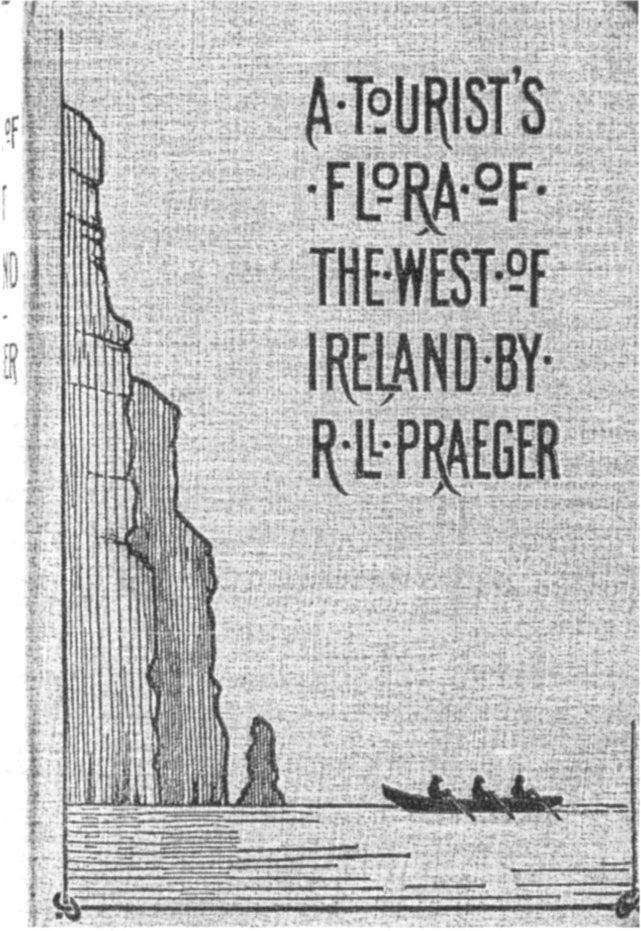
Although published some 89 years ago, Praeger’s A Tourist’s Flora remains a practicable guide.

Robert Lloyd Praeger (1865–1953), the doyen of Irish botany.
Praeger was extremely prolific, producing a vast body of scientific papers as well as three other books, for educational use, which were illustrated by his sister Rosamond (1867–1954): Open-Air Studies in Botany: Sketches of British Wildflowers in Their Homes (1897), Weeds: Simple Lessons for Children (1913) and Aspects of Plant Life with Special Reference to the British Flora (1921).100,101,102 His readiness to synthesise scientific information in order to make it more accessible to ordinary people was a direct consequence of his involvement with the Belfast Naturalists’ Field Club, whose purpose was to enlighten and educate.
Two other lesser known Irish natural history texts that combine similar concerns deal with the etymology of Plant Names (1923)103 by Thomas Somerville Lindsay (1854–1933), who was also Archdeacon of Dublin, and A Student’s Illustrated Irish Flora Being a Guide to the Indigenous Seed-plants of Ireland (1931)104 by John Adams (1872–1950). Adams also published several papers on algae, lichen and fungi. He left Ireland and became Dominion Botanist in Canada.
Following encouragement from Alexander Goodman More, Nathaniel Colgan (1851–1919) put together and published Flora of the County Dublin41 in 1904 – a botanical study considered by Praeger to be a model in its painstaking accuracy and careful detail. Much later on in the century the Dublin Naturalists’ Field Club prepared a supplement to it which came out under the aegis of the National Museum of Ireland in 1961. A new edition was prepared by the DNFC for publication in 1998. Provisions in More’s will made Colgan and Reginald W. Scully editors of the second edition of Cybele Hibernica, an enormous task which they completed within three years. Scully (1858–1935), a man of retiring disposition, not unlike Colgan, was also indebted to More for providing him with inspiration. His own endeavours came to fruition in The Flora of County Kerry (1916)105, an additional county flora noted for its fullness and accuracy. Scully passed the torch on to James Ponsonbv Brunker (1885–1970) who admitted that Flora of the County Wicklow (1950)106 was initiated by his ‘blundering’ upon some clovers growing near Wicklow town which he took to Scully for identification. Thereafter Scully ‘schooled’ him in field craft.
Cynthia Longfield (1896–1991) was a gifted entomologist whose landed family were from Cloyne, Co. Cork. She was a member of the St George Scientific Expedition to the Pacific in 1924 and undertook many other expeditions at a time when it was considered not quite correct for young women to be going off by themselves. She was a world authority on the Odonata — the damselflies and dragonflies. Her Dragonflies of the British Isles (1937)107 was the standard text for many years and she collaborated with Philip Corbet and Norman Moore to produce the New Naturalist volume on Dragonflies (1960).108
James Parsons Burkitt (1870–1959) made a major and generally unappreciated contribution to the science of ornithology.109 Working by himself in the 1920s he unravelled some previously misinterpreted behaviour of the robin as well as contributing new insights into the population dynamics of birds. He was the County Surveyor for Fermanagh between 1900 and 1940 but in his spare time, working alone in his back garden, he trapped robins and by marking them individually with metal bands of different shapes – colour rings were precluded as he was colour-blind – he followed the fortunes of each bird. Burkitt was probably the first to use this technique; he also introduced age identification through ring recovery, something which then became standard practice and an important aspect of ornithological field work.
Cecil Robert Vesey Stoney (1878–1952), ornithologist and Donegal squire, was one of the finest field ornithologists Ireland has ever produced. His greatest discovery in 1930, together with G.R. Humphreys, was the large breeding colony of black-necked grebes at Lough Funshinagh, Co. Roscommon. Stoney was known for his delightful sense of humour, puckish wit, buoyant enthusiasm and the gift of teaching and inspiring others. C.J. Carroll (fl. 1920), another squire from Co. Tipperary, shared Stoney’s enthusiasm for egg-collecting. Apart from contributing much information on the distribution of the peregrine falcon in Ireland, Carroll built up perhaps the best private collection of birds displaying albinism and melanism.
Another remarkable naturalist who worked mostly by himself in Northern Ireland for many years was the Rev. Edward Allworthy Armstrong (1900–78). He was born in Belfast, ordained a deacon in 1921 in Cambridge, England, and eventually returned to Cambridge in 1944 as vicar of St Mark’s, Newnham, until his retirement in 1966. He had a prodigious output of natural history works. His intensive study of the wren, based on his own careful and rigorous field work, chronicled the behaviour and breeding biology of this diminutive bird. The resultant treatise The Wren (1955) is one of the finest bird monographs ever published.110 His previous book The Birds of the Grey Wind (1940) is a prize-winning classic of regional natural history, mostly about birds, full of erudition and exuding a deep love for Northern Ireland’s countryside.111 He published many other original natural history classics, blending scholarship with his passion for nature. These include the Folklore of Birds (1952), still the best text today on this subject.112
Amongst other Northern Ireland naturalists of note, C. Douglas ‘Jimmy’ Deane played an important role in publicising natural history and conservation issues through his writings over 37 years in the Belfast Telegraph and then the Belfast Newsletter. He wrote several books, the most important being the Handbook of the Birds of Northern Ireland (1954).113 He was an accomplished film maker – Birds of the Grey Wind (1958) being his best – and was active in setting up the Ulster Society for the Protection of Birds.
Arnold Benington (1904–82) was another important Northern Ireland naturalist. His studies on peregrines and sparrowhawk populations in the 1940s–1960s provided important baseline information while he was, like Deane, a populariser of natural history through lecturing, writing and broadcasting. He was also instrumental in the founding of Ulster’s only bird observatory, on the Copeland Islands.
The 1930s was also the time for the birth of perhaps the finest and most accessible book on the Irish countryside. In Robert Lloyd Praeger’s The Way That I Went (1937) the richness of Ireland’s landscape and its flora and fauna are effortlessly intermingled with other strands of archaeology, folklore, etymology and history to form a complete narrative.114 The book could best be described as a prolonged love poem of the country, its landscape and its life. No text published since has rivalled it. Before embarking on this title, Praeger had a trial flight with Beyond Soundings (1930),115 also aimed at the general public, but it lacked the force and excitement of The Way That I Went. In 1941 he brought out A Populous Solitude but again it did not match up to his masterpiece.116 One of Praeger’s most important works for the natural history bibliographer was Some Irish Naturalists (1949), an indispensable source of information on earlier Irish naturalists.2
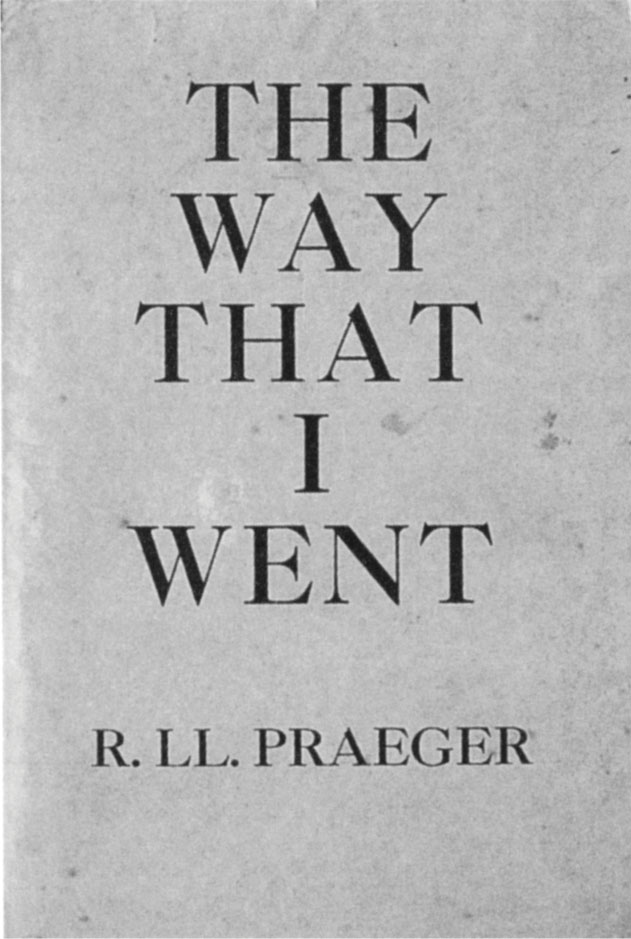
The Way That I Went, Praeger’s general natural history, topographical and cultural account of Ireland, remains the best account of the country for natural historians and the general reader.
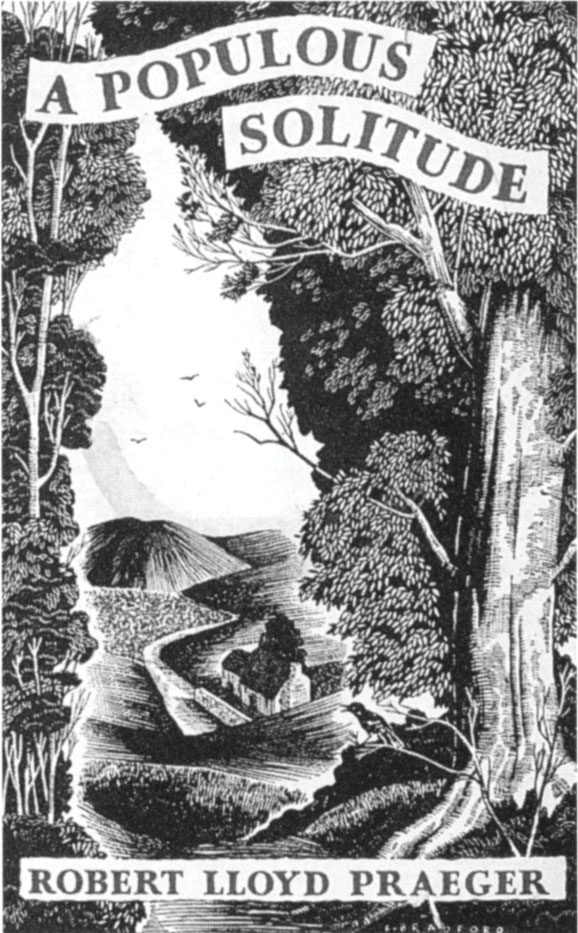
Praeger’s A Populous Solitude was less successful than The Way That I Went but nevertheless satisfied the public demand for such works,
Father Patrick G. Kennedy (1881–1966), a Jesuit priest based in Dublin, emerged during the 1930s as a gifted bird watcher, writer and campaigner for bird conservation. He was invited to take on the preparation of the 1961 edition of the List of Irish Birds which had been published by the National Museum at infrequent intervals since the first issue was compiled by More in 1885. What had started life as a somewhat stark and lifeless catalogue of birds bearing the title A List of Irish Birds showing the species contained in the Science and Art Museum, Dublin117 became, under Kennedy’s pen, generous, excellent and the most fulsome of all the Museum lists. It still stands today as an exhaustive text.118 Kennedy also championed the conservation of North Bull Island, Dublin, an extensive sand dune system surrounded by intertidal mud flats in the northern part of Dublin Bay, one of the best places in the country to watch waders and wildfowl at unbelievably close quarters. Several mad schemes had been hatched to transform the area into a major recreation playground by damming the intertidal mud flats at either end of the landward side of the island, turning the impounded area into a massive permanent water lagoon. But it was obvious that the so-called ‘blue lagoon’ could turn into a putrefying mass of stagnating water laced with seaweed growth. Such a development would have destroyed the wader and wildfowl feeding habitats and driven the birds away. Kennedy fought all the schemes and eventually persuaded the authorities to declare the area Ireland’s first bird sanctuary under the Protection of Birds Act, 1930 – something Kennedy also had a hand in promoting through his friend Senator S. Brown. Kennedy’s An Irish Sanctuary (1953) tells of the ecology of the birds at North Bull as well as relating the story of the battles to save the area from development.119
The impending Second World War had the effect of dampening down the growth of interest in natural history in Ireland although the country was not engaged in hostilities. One vitally important project fell as an unfortunate victim of this period of astringency. It was Praeger’s Natural History of Ireland: a Sketch of its Flora and Fauna, written in 1944 when Praeger was aged 79.120 The War and consequent delays prevented the book’s publication until 1950 by which time its format, style and much of the information it contained was ‘dated’. Echoes of long species lists with little interpretation or analysis, as was customary in earlier works, reverberated throughout the book. In fact, Praeger admitted in his preface that only a limited amount of emendation to the 1944 text had been possible prior to its publication. The book also suffered greatly from the absence of any illustrations apart from three stark graphs.
In the early 1950s Kennedy teamed up with Robert Francis Ruttledge (b.1899) and Charles F. Scroope (1876–1975) with assistance from George Rayner Humphreys (1886–1980) to produce The Birds of Ireland (1954), an updated version of Ussher and Warren’s 1900 exemplar.121 Each of the three primary authors undertook to write the entry for the species or group of species with which they were most familiar. They were helped by an extensive network of correspondents who diligently sent in information from the fastnesses of estate walls, rectories, or retiring cottages, for traditionally the amateur study of birds was favoured by the Protestant fringe of the population – something no longer true. The 1954 vintage of The Birds of Ireland maintained the high standards set in 1900. It was the third in a series of major national ornithological works, each appearing at almost 50 year intervals since 1850. When is the fourth due to hatch? Ruttledge’s Ireland’s Birds appeared in 1966 and was a somewhat abbreviated work, drawing heavily upon the many discoveries and observations made by an enthusiastic band of bird watchers during the late 1950s and early 1960s.122 Clive Hutchinson’s (1949–98) Birds in Ireland (1989) is a more comprehensive and satisfactory work, approximating the style, detail and grandness expected of an enduring national work.123


